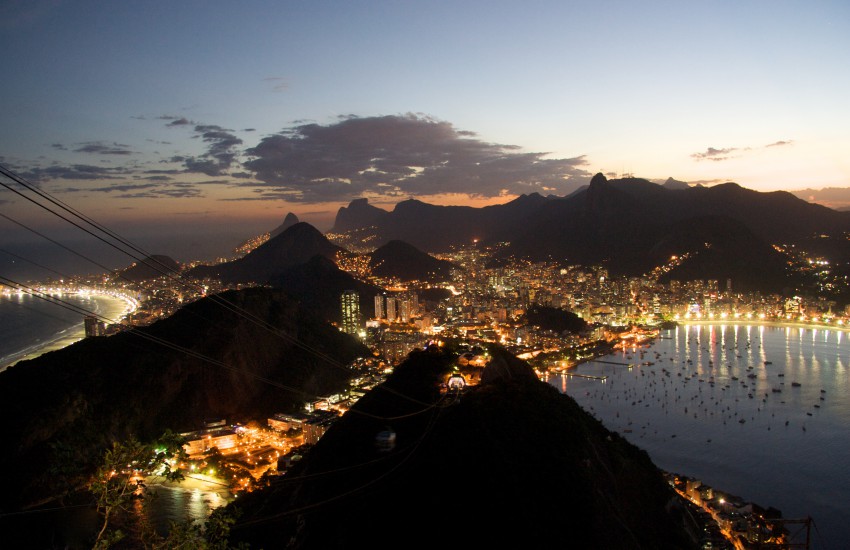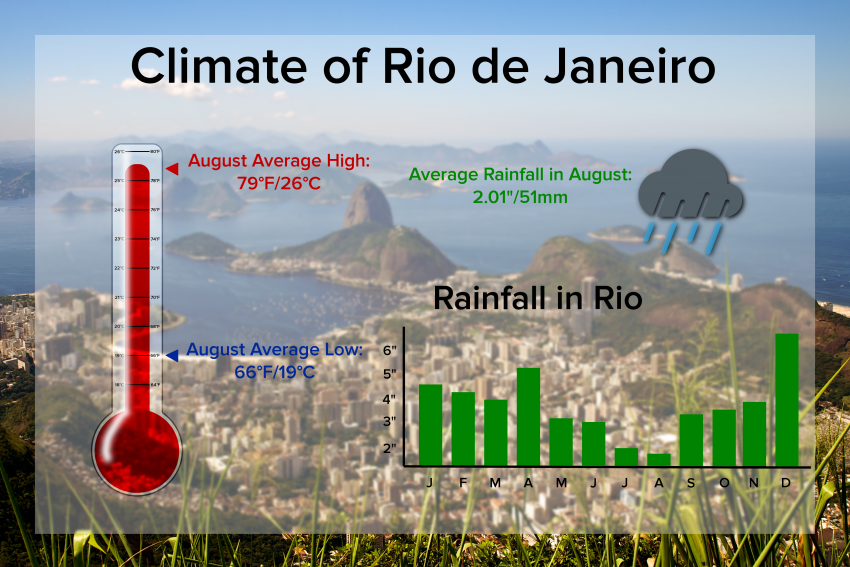When we talk about Rio de Janeiro, images of sun-baked beaches and sizzling nightlife are usually the first to come to mind. Certainly athletes participating in the upcoming Summer Olympics (August 5th to 21st) are looking forward to a bit of warmth and sunshine as they relax between grueling practice sessions. But, just what makes Rio the tropical paradise it is? MORECAST details the climate of South America’s most famous destination city.
On the the far southeastern coast of Brazil, Rio de Janeiro’s twelve million residents enjoy a tropical savanna climate, just shy of being classed as a wetter tropical monsoon climate. The city is comprised of four districts split up by sharp, hilly terrain. Temperatures are highly moderated by the ocean, with a relatively small range of temperatures both daily and seasonally. In fact, Olympians from places like Norway or Russia may have a chuckle to themselves if they hear what’s considered “turning cold” by a resident of Rio: anything below 21°C (70°F)! Closer to the ocean, temperatures rarely reach much lower than 21°C (70°F) while higher points on the city fringes and surroundings areas can get fairly chilly in the winter, even seeing a rare frost on the peaks. The record low for the city itself is 48°F (9°C).
Rio de Janeiro sees its warmest temperatures between December and March, though thanks again to ocean moderation, the highest average temperatures are only a few degrees warmer than the coolest month, July.
How about the climate for Rio in August? Temperatures near normal for the month, with highs around 26°C (78°F), will be comfortable for most athletes. Outdoor swimming events will also be very comfortable, with average water temperatures of 22°C (72°F). Such warmth is a far cry from the chilly temperatures of London’s lakes and the English Channel at the Olympic Games four years ago.
The Games also fall in the “dry” season for the city. August is the third driest month of the year, receiving only a third of the rainfall that falls in the wettest month, January. Recent rainfall deficits have been a source of controversy. The Brazilian drought of 2014-2015 affected Sao Paulo more severely than Rio, but raised questions about the ability of the country’s infrastructure to supply water to both Sao Paulo and Rio from the same source in emergency situations.
On the other hand, recent years have also brought a surge in the number of severe thunderstorms affecting the city, leading to periodic power outages and severe flash flooding. Tourists can at least take some comfort from the fact that tropical cyclones are extremely rare. The South Atlantic basin is not conducive for cyclone development, with the broad scale winds preventing activity. A once-in-a-lifetime exception was Hurricane Catarina, which struck the Brazilian coast not far south of Rio in 2004.
Want more coverage in the build up to the Rio Olympic Games? Check back to dev.morecast.local and to our Facebook and Twitter feeds for additional articles to be published in the next few weeks!

